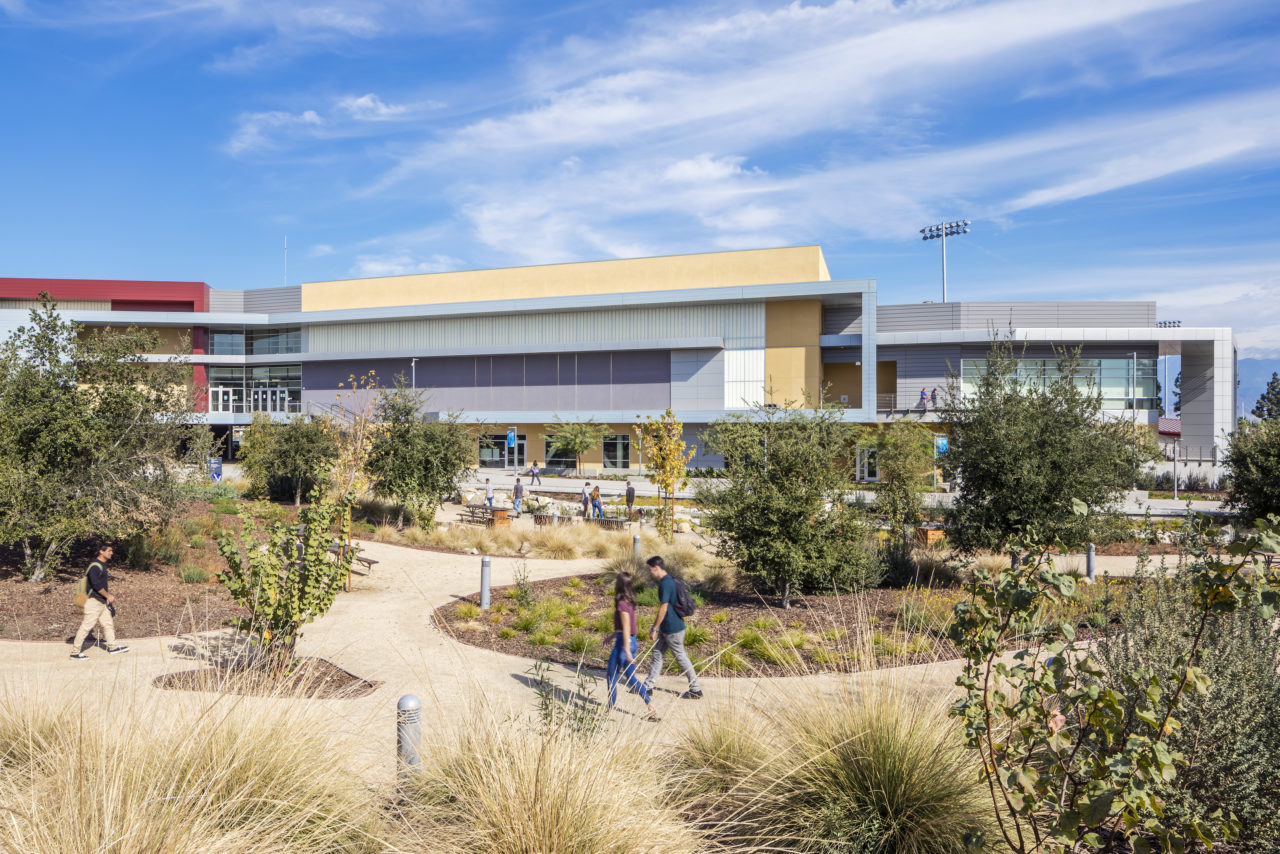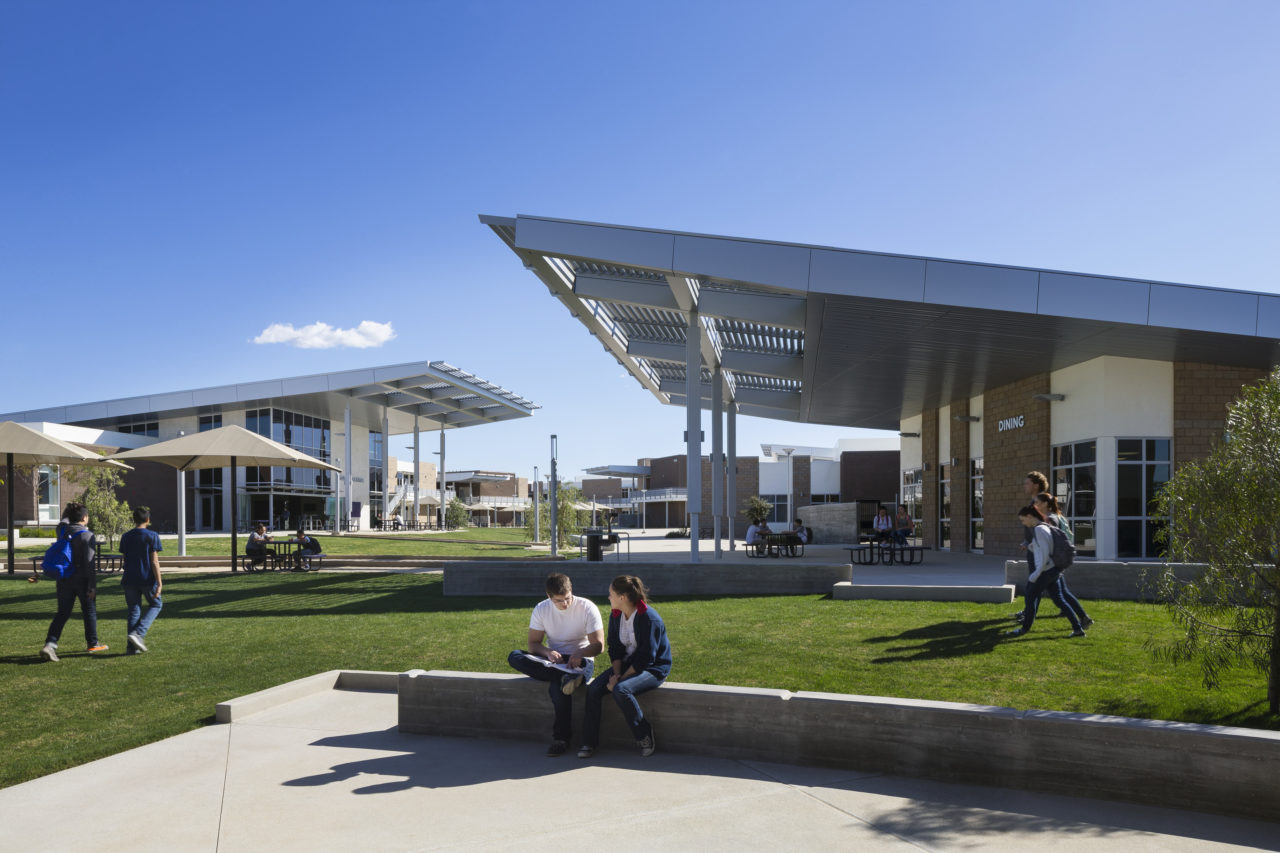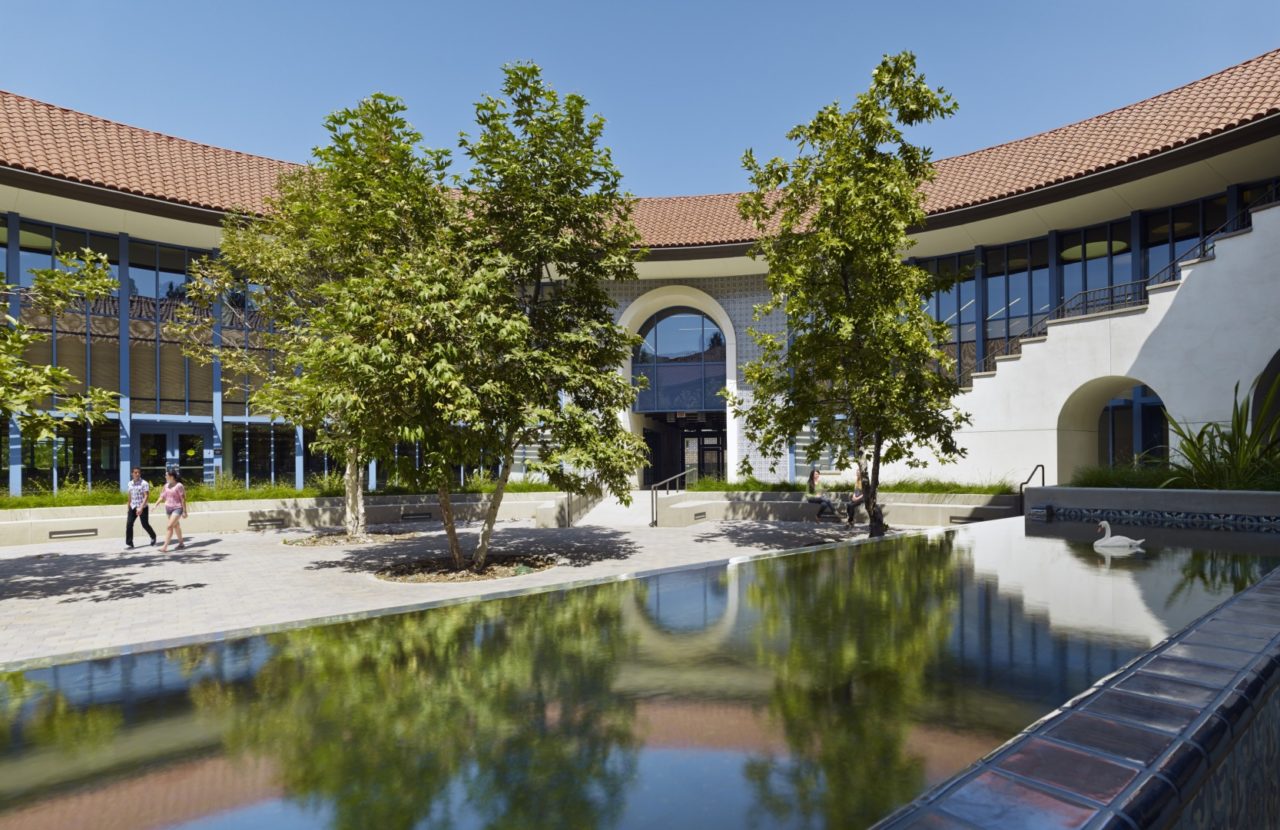Regenerative design is all about thinking ahead, where architects must design with the future in mind every step of the way. As opposed to sustainably designed buildings, which are based on the concept of only using the minimum resources you need, regenerative buildings are designed and operated to reverse damage and have a net-positive impact on the environment.
At the macroscale, buildings can serve as carbon sequestration sites. They can generate and store energy on site for surrounding communities, can use the site to clean stormwater runoff, and can even have skins that ‘scrub’ the air. This idea of not just using fewer resources, but of replenishing and bettering our environment is what we at HMC Architects believe is the way of the future in architecture. We see it as our responsibility to incorporate regenerative design principles into our projects,to educate our clients about the benefits of these principles, and to inspire everyone to design for a better world.
Regenerative Design vs. Sustainable Design
The definition of sustainable design is founded upon the concept of “do no additional harm” or “use only what you need, and no more.” This is an antiquated concept predicated on the notion that we merely seek to sustain our own existence, our own conveniences, or our routines and our own individual environments. If one continues to use resources, the fact is that those resources will eventually be depleted.
What if we could design a means of living that allowed us to use the resources we need, and then restore those resources? As architects, designers and planners, we have the unique opportunity to provide this mind shift.
We can design buildings that provide resource-efficient and beautiful learning and working spaces. The hope is that these spaces will teach and inspire these users to think beyond sustaining and to reach for a future that is about regenerating.
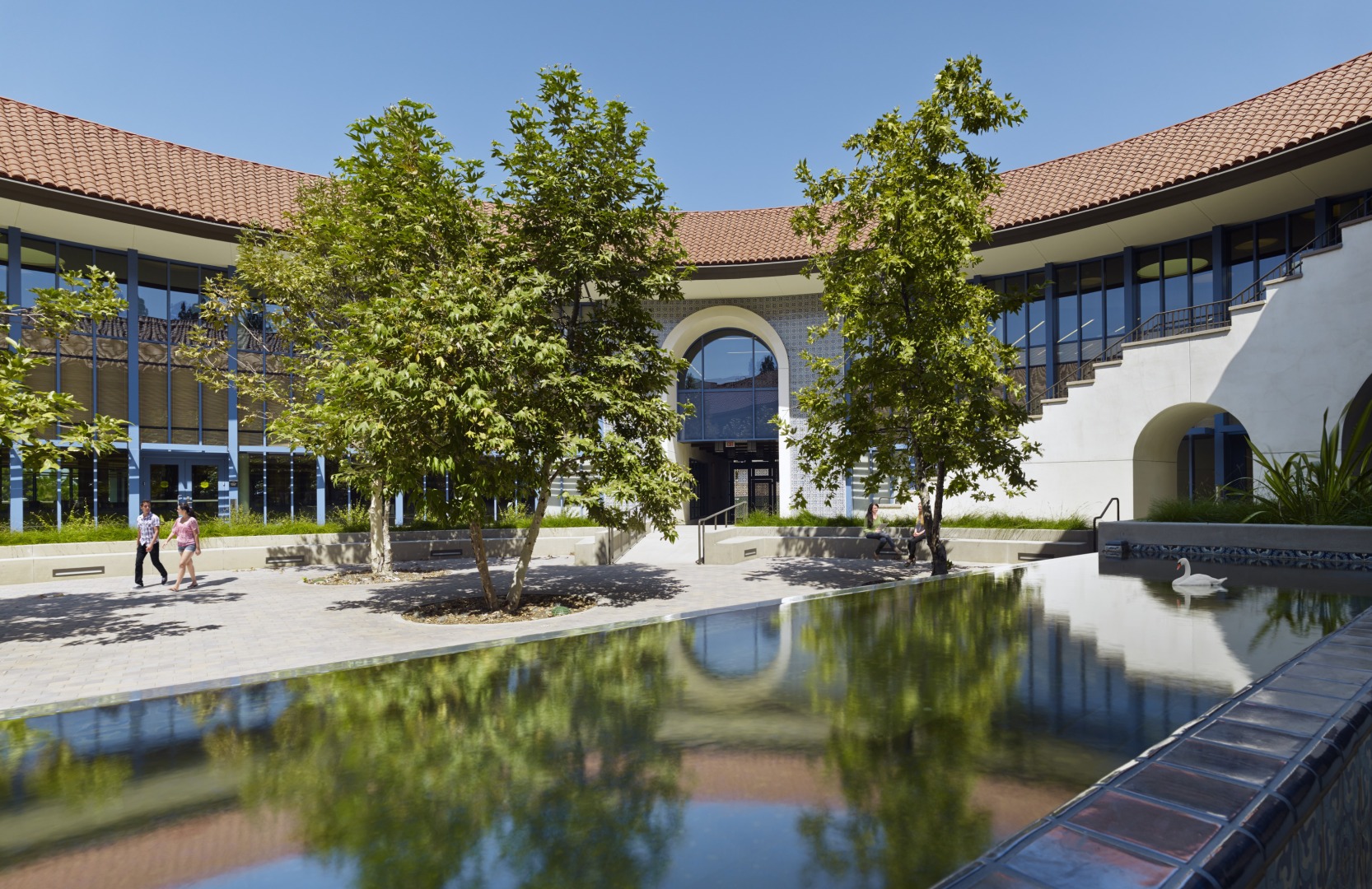 Top Regenerative Design Strategies in Buildings
Top Regenerative Design Strategies in Buildings
At the very start of the project, the architect must have a sincere discussion with the client to understand exactly what they expect out of the building in terms of regenerative design. What are they comfortable pursuing in terms of an energy target? What strategies would they be willing to push the envelope on? Some of the top regenerative design strategies are:
- Green Roofs & Skins. Green roofs are fairly common in today’s building design industry, but we can also design buildings with skins that actually clean the ambient air and sequester carbon.
- Capturing Rainwater. Designing constructed wetlands that capture and naturally store stormwater is a useful tool that replenishes the underground aquifer.
Wastewater Treatment. On-site water treatment may have a high initial principal cost, with a low monetary return on investment, but that same strategy is far more impactful in terms of water conservation and thereby results in long-term resource savings that arguably outweighs short-term financial projections. - Energy Consumption & Production. It’s important to not only design buildings that use less energy but to also design them to produce and store energy on site so that there is less or no reliance on the utility grid. Energy stored on site via microgrids can be used by the by the building during night hours. The building could also serve as small scale energy resource for the surrounding community, thereby further reducing reliance on the larger utility. Renewable technologies such as solar panels and wind turbines are becoming more commonplace in projects as energy generators. Every day, new technologies are coming online such as biodigesters which convert solid waste into energy which can be used by the building.
- Thermal Efficient Construction. Thermal efficient construction encompasses the whole building envelope, creating a building that is more energy efficient, which reduces the mechanical system load. Curtain walls, for example, can contribute to thermal efficiency, by creating a thermal barrier between the exterior and interior.
While some strategies have been around for some time now, there is an exciting opportunity to keep pushing the boundaries of regenerative design. It’s also important to remember that buildings do more than just providing shelter — they teach, inspire, and support occupant health. These are less tangible, but no less important outcomes of regenerative design.
The Challenges of Regenerative Design
Often the hindrance in regenerative design is discomfort with trying something new—from both the clients’ side and the architects’ side. This can be remedied with good collaboration within the team, a solid relationship with the client, and mutual respect between the architect and the contractor.
Trying something new takes courage, but the rewards can be astounding. People are becoming more and more aware of the importance of protecting and replenishing our diminishing resources, so it is only a matter of time before the limitations of current legislation give way to a critical mass of building users and building designers who desire change; change that is delivered through regenerative design innovation.
With the buy-in from civic leaders, there is an opportunity for large-scale implementation of regenerative design, resulting in whole communities or even cities that represents biophilic urbanism. One example of the implementation of this concept is in Singapore. The widespread use of green walls and roofs, a commitment to water self-sufficiency through rainwater catchments and treatment, as well as the iconic Supertree Grove, are all great examples of how a large city can have a positive impact by prioritizing regenerative design principles.
Leading by Example
HMC Architects believes in leading by example, which is why we are always actively pursuing the integration of regenerative design principles into our projects. These principles need not be complex in order to be effective. On the contrary, the more simple and straightforward the regenerative design principle, the more successful its implementation and adoption by the end user, the client. The client must feel comfortable with the regenerative design strategy in order for it to be truly impactful.
We achieve this level of comfortability by setting up training sessions so that our clients are familiar with the systems. We aim to ensure that the building is not simply handed over to the client, but rather that the client has complete buy-in with the intent. This commitment is just as much a part of the regenerative design as resource efficiency.
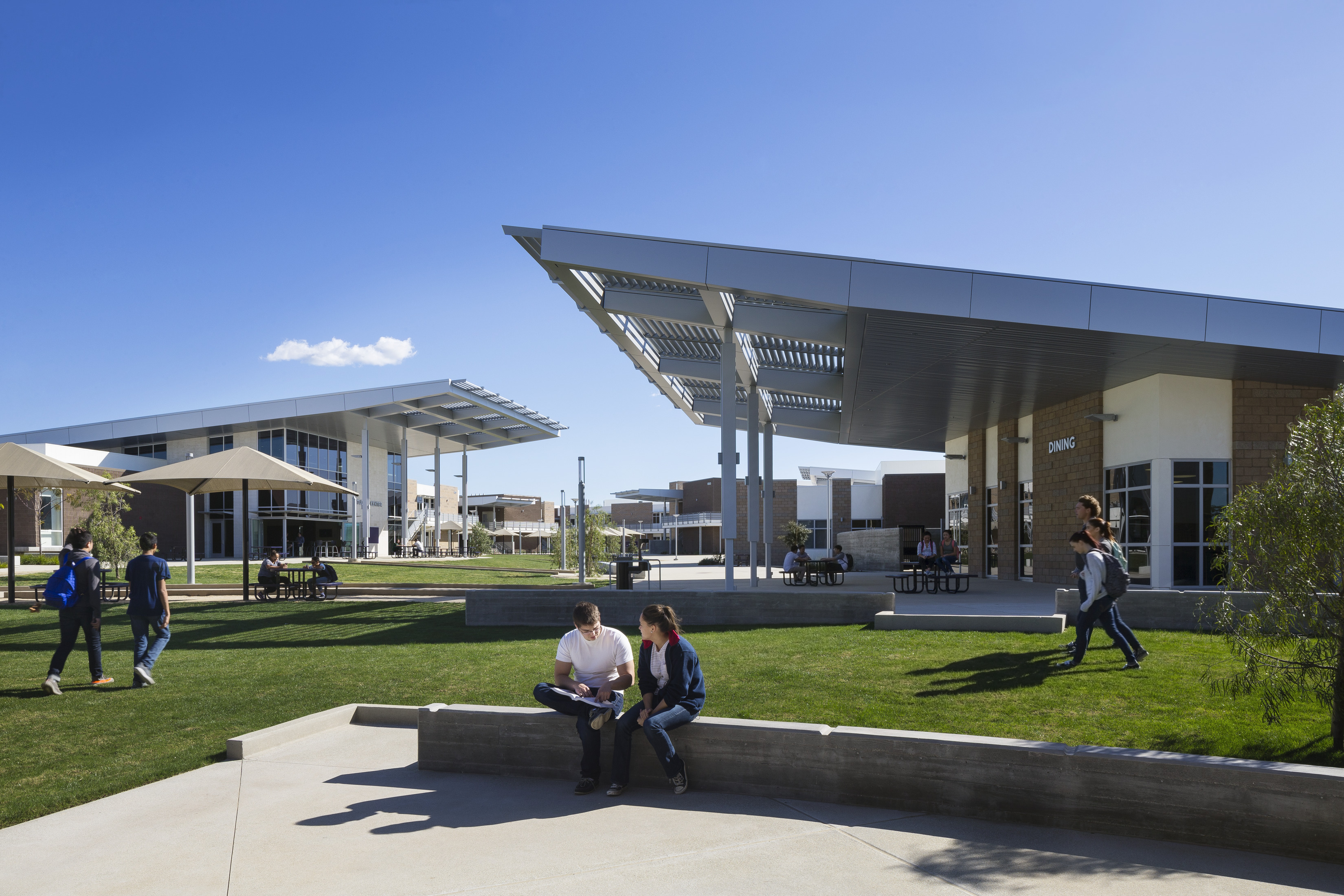 The Portola High School in Irvine, California is a modern school that serves as a learning institution not only for classical education needs but also the future of regenerative design. The green roof is connected to the HVAC system so that on hot days when the air conditioning kicks in, the water generated from it is used to irrigate the green roof. When the roof is saturated, it is then able to passively cool the building for the rest of the day, and often the next as well, reducing reliance on the air conditioning system.
The Portola High School in Irvine, California is a modern school that serves as a learning institution not only for classical education needs but also the future of regenerative design. The green roof is connected to the HVAC system so that on hot days when the air conditioning kicks in, the water generated from it is used to irrigate the green roof. When the roof is saturated, it is then able to passively cool the building for the rest of the day, and often the next as well, reducing reliance on the air conditioning system.
The Pierce College Library in Los Angeles’ San Fernando Valley is a LEED Platinum-certified example of regenerative design, incorporating a high-performance building envelope, on-site water collection, and photovoltaics that produce renewable energy for the building. The result is not only a project that achieves a high level of environmental responsibility, but also a building that educates its occupants about the components that contribute to its success.
At the San Bernardino Valley College Kinesiology and Athletics Complex in San Bernardino, California, constructed wetlands capture stormwater on site and replenish the underground aquifer while simultaneously providing the site with a heat sink to offset solar heat gains. The vegetation designed into the wetlands also promotes biodiversity by attracting and supporting native flora and fauna.
Designing buildings that incorporate biomimicry in such a way that they actually give back to the environment rather than solely take from it is what excites us the most. There are innovations out there that are testing this frontier, and it’s not only exciting but promising. Whether it is a building cladding system that purifies stormwater, an air-cleansing building skin, or a mechanical system that captures carbon to combat greenhouse gas emissions, these innovations are thinking ahead, and their adoption could help push the building industry in the right direction.
HMC is experienced with regenerative design strategies. Our design teams are passionate about creating buildings that are not just sustainable but teach future generations to think beyond sustainability and look towards these regenerative practices. To learn more about how you can incorporate regenerative design into your facility, contact HMC Architects today.
